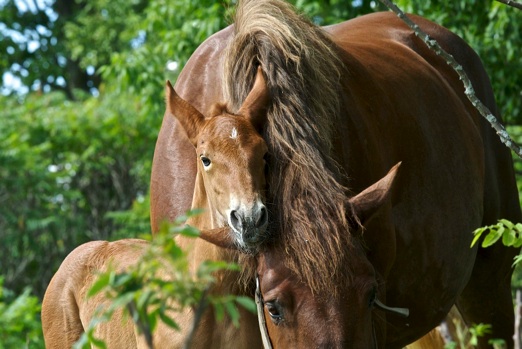A Breed in Need
Photos and text © Copyright Lynn Cassels-Caldwell 2010 All rights reserved.
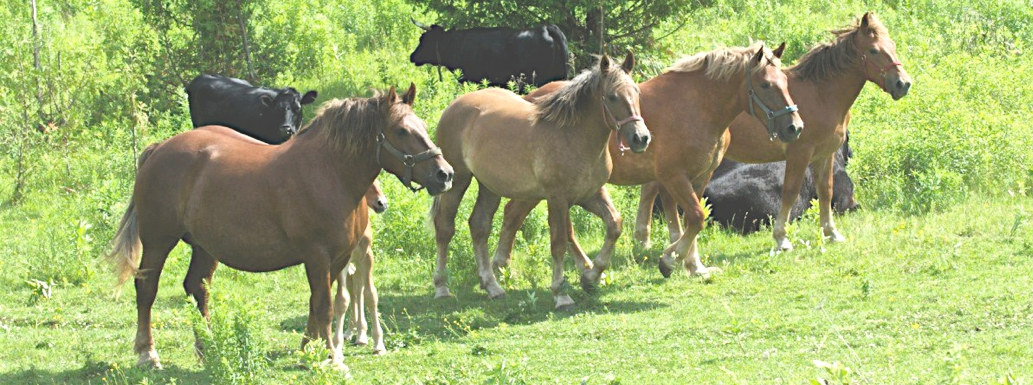
All of the horses in these pictures are in danger. As individuals they are very well kept, however, the greater imminent threat is to what they each carry deep inside them, as a group.
Its their DNA that is at critical risk.
The beautiful, proud, and friendly Suffolk Punch draft horse is battling for survival at this very moment, with a world wide population of only about 1500 animals currently in existence. Comparing that to the total world horse population, which has been calculated by the Global Horse Population Report (2006) at just over 58 million animals, and the fragile situation of the Suffolk becomes clear.
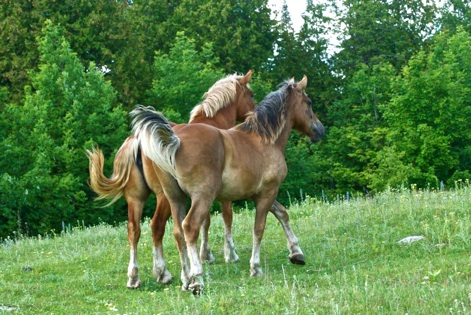
Rare Breeds Canada has classified the Suffolk Punch as Endangered, with less than 50 registrations of purebred female stock per year. United Kingdom Rare Breeds Survival Trust, and the American Livestock Breeds Conservancy both rank the breed as Critical.
Frank Fitzpatrick is a self sufficient farmer in east central Ontario, Canada. His 100 acre property supplies wood for heating and lumber for building, with solar panels providing electricity. The land supports dense forest, crop gardening and open, hilly pastures. A few years ago, a long period of research led him to the Suffolk Punch horse. He purchased two fillies, “Rose” and “Nutmeg”, and later a colt, “Chester”, for working on his acreage. They possessed everything he was looking for in a long term farm horse: a strong compact build suitable for work, great dispositions, incredibly hardy constitutions, and extremely attractive colour.
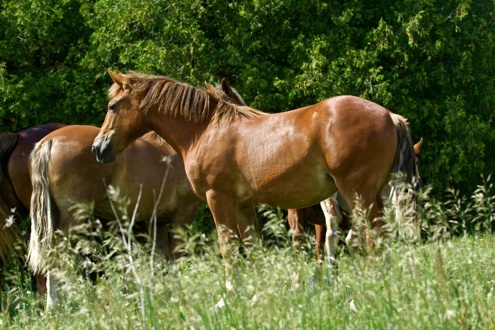
Realizing the rarity of the breed, and the urgency to maintain it, Frank began to breed his Suffolks on a small scale. Preservationist breeding involves tremendous time, effort, dedication and money. Rare breeds don't always have well established markets to sell animals, but the costs of raising the horses are the same as any mainstream breed.
In the early 1700s, the farmers of Suffolk County, East Anglia, England, were looking for the same qualities in their horses as Frank was. The stallion, “Crisp's Horse of Ufford” was foaled in 1768, and was destined to become the founder of the the Suffolk Punch breed, with eventually all animals tracing back to him. These English farmers developed the oldest breed of heavy horse in Great Britain, breeding them in a relatively remote area, and keeping them pure.
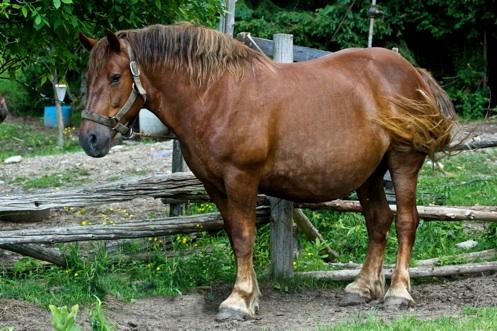
For them and Frank, farming demanded a horse “bred for the furrow”, strong and heavy but not too tall, at 16 to 17 hh, standing on correct legs of heavy bone, close set behind for easy ploughing. Their build was compact, round, broad, smooth, and barrel chested, with tremendously deep girth, well muscled necks and hindquarters, and weight reaching a ton.
They are not leggy like modern show draft horses. Thus the name “Punch”, which is an old English term for a short, stout man, became associated with the Suffolk horses. Their overall impression is that of deep, smooth bodied strength. They needed to be hardy, and easy to keep on rough pasture year round, maintaining robust health. Today's Suffolks still exhibit these distinct characteristics.
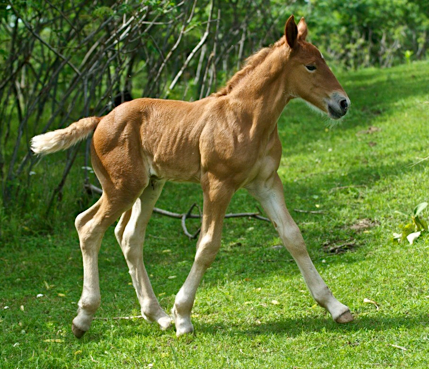
Frank's horses all possess incredible hooves, hard as flint, well rounded with open heels, and requiring no shoes, even though they are pastured on rough terrain. In England the Suffolks are the only breed to offer a hoof competition, judged solely on quality of the hoof. The breed also has no heavy feathering on their substantial lower legs, which reduces the risk of skin disease from constantly working in heavy soil.
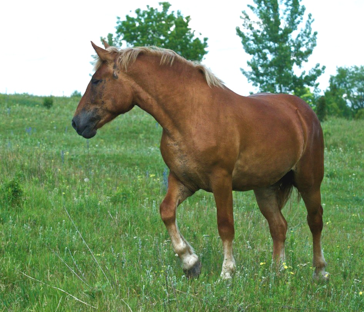
Working farmers need horses that are intelligent and easy to handle, day after day. Frank's Suffolks are all exceptionally friendly, with his five week old colt, “Hercules”, practically climbing into my lap. He finds them to be smart, easily trained for driving, pulling and riding. His stallion, recently sold, was turned out year round with the mares, and worked handily in the harness. The old English farmers infused their horses's breeding with brains, heart, and a determined willingness to work, still evident to this day.
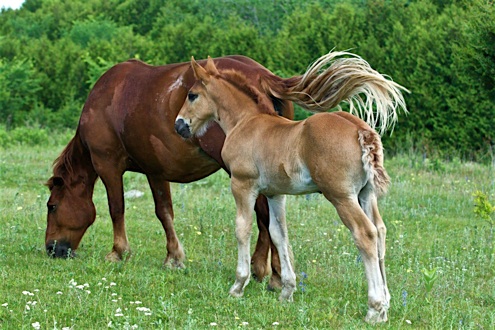
All Suffolk Punch horses are required to be some variation of “chesnut” (the old English spelling), with seven colour categories: red, golden, yellow, light, dark, dull dark, and the most common, bright chestnut, which is a very rich colour. White markings are not common.
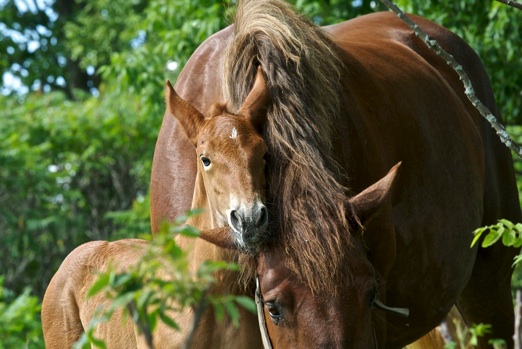
Frank currently has several offspring from “Chester”; the mares “Willow” (2008), “Coco” and “Bella” (both 2009) and the strapping colt “Hercules” (2010 out of “Nutmeg”). “Rose” foaled a filly, “Grace”, on Father??™s Day. He uses his Suffolks on the manure spreader and for all gardening work, including ploughing and harrowing, as well as skidding logs, hauling, pleasure driving to a cutter or large sleigh, occasional riding, and breeding.
The danger is a long term group issue versus a short term individual one, but it is urgently real. A few dedicated breeders like Frank are the only obstacle to extinction of the entire breed. What would the equine world be like without genetic diversity? Deep in the DNA there may be disease resistance or health and reproduction, longevity and hardiness genes that have been long lost to more modern breeds.
Sixty years ago the rise of mechanized farming brought severe decimation to the Suffolk Punch. It is making a very slow comeback because of those devoted breeders who see its intrinsic value, and who are willing to put decades of effort into preserving these magnificent draft horses.
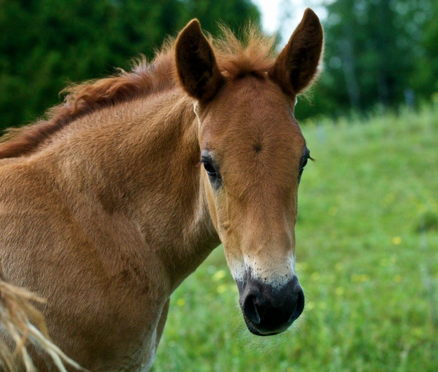
It was a pleasure and a priviledge to get to know these very rare horses. In “Hercules” and his sister, we see the new faces of the future!
www.suffolkhorsesociety.org.uk - UK Suffolk registry
www.suffolkpunch.com - North American Suffolk registry
Frank Fitzpatrick - 705-750-7371
